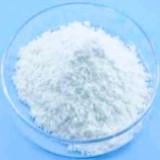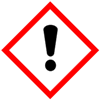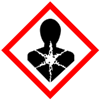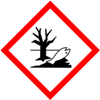 |
Felodipine SDS Safety Data Sheet of Supplier Exporter Manufacturers' Representative |
Email: info@ammol.org |
Call Toll Free +1-855-552-6665 |
Quick Links to Products: Clevidipine Butyrate | Eslicarbazepine Acetate | Felodipine | Olanzapine | Oxcarbazepine | Quetiapine Fumarate | and more -- |
Felodipine
CAS Number: 72509-76-3 or 86189-69-7
Molecular Formula: C18H19Cl2NO4
Molecular Weight: 384.25

Felodipine
Felodipine SDS, Safety Data Sheet
MSDS Sheet, Material Safety Data Sheet 05-Feb-25
Section 1: Product and Company Identification
Product Name & Other Names: Felodipine.
CAS No.: 72509-76-3 or 86189-69-7
EINECS, EC Number: 620-472-7
Relevant uses and uses advised against (if any): Laboratory chemicals, Manufacture of substances
Supplier: As per letterhead.
Section 2: Hazards Identification
GHS, Globally Harmonized System Classification in accordance with 29 CFR 1910
Classification according to Regulation (EC) No 1272/2008
Acute toxicity, Oral (Category 4), H302
Reproductive toxicity, (Category 2) H361d
Specific target organ toxicity - repeated exposure (Category 2), H373
Chronic aquatic toxicity (Category 1), H410
Labeling according to GHS & Regulation (EC) No 1272/2008
GHS Label Elements  Irritant |
GHS Label Elements |
GHS Label Elements |
Signal Words: Danger
Hazard statements:
H302: Harmful if swallowed.
H361d: Suspected of damaging the unborn child.
H373: May causes damage to organs through prolonged or repeated exposure.
H410: Very toxic to aquatic life with long lasting effects.
Precautionary statements:
P260: Do not breathe dust/fume/gas/mist/vapors/spray.
P264 Wash thoroughly after handling.
P270: Do not eat, drink or smoke when using this product.
P271: Use only outdoors or in a well-ventilated area.
P273: Avoid release to the environment.
P280: Wear protective gloves/protective clothing/eye protection/face protection.
P314: Get Medical advice/attention if you feel unwell.
P301+P312: IF SWALLOWED: Call a POISON CENTER or doctor/ physician if you feel unwell.
P302+P352: IF ON SKIN: Wash with plenty of soap and water.
P305+P351+P338: IF IN EYES: Rinse cautiously with water for several minutes. Remove contact lenses, if present and easy to do. Continue rinsing.
Section 3: Composition / Information on Ingredients
Product Name & Other Names: Felodipine.
CAS No.: 72509-76-3 or 86189-69-7
EINECS, EC Number: 620-472-7
Section 4: First Aid Measures
Always seek medical attention after first aid measures are provided.
Eyes: Immediately flush eyes with excess water for 15 minutes, lifting lower and upper eyelids occasionally.
Skin: Immediately flush skin with excess water for 15 minutes while removing contaminated clothing.
Ingestion: Call Emergency Medical immediately. Rinse mouth with cold water. Give the victim 1-2 cups of water or milk to drink. Induce vomiting immediately.
Inhalation: Remove to fresh air. If not breathing, give artificial respiration.
Section 5: Fire Fighting Measures
Suitable extinguishing media: Use water spray, alcohol-resistant foam, dry chemical, or carbon dioxide. Avoid solid water jet as it can scatter fire.
Protective equipment and precautions for firefighters: Use water spray, foam, or dry chemical to extinguish fire. Firefighters should wear full firefighting turn-out gear and respiratory protection. Cool container with water spray.
Special hazards arising from the substance: Carbon oxides, Nitrogen oxides (NOx), Chlorine compounds.
Special Information: In the event of a fire, wear full protective clothing and NIOSH-approved self-contained breathing apparatus with full face piece operated in the pressure demand or other positive pressure mode.
Section 6: Accidental Release Measures
Personal precautions, protective equipment, and emergency procedures: Avoid breathing dust/fumes/gas/mist/vapors/spray. Use individual protective equipment (waterproof boots, suitable protective clothing, safety glasses, etc.).
Environmental precautions: Do not let the product enter drains, soil, or water sources.
Methods and materials used for containment cleanup procedures and Storage: Do not inhale dust, vapors, mist, or gas. Avoid dust formation. Contain spilled material. Cover with an inert, non-combustible absorbent material, (e.g., sand, earth, diatomaceous earth, vermiculite). Use a shovel to put the material into a convenient waste disposal container.
Section 7: Handling and Storage Green
Precautions for safe handling: Apply according to good manufacturing and industrial hygiene practices. Ensure proper ventilation. In case of insufficient ventilation, wear suitable respiratory equipment. Do not drink, eat, or smoke while handling. Avoid contact with skin, eyes, and clothing. Minimize dust generation. Avoid breathing dust/fumes/gas/mist/vapors/spray. Keep container tightly closed. Avoid ingestion and inhalation. Use individual protective equipment (waterproof boots, suitable protective clothing, safety glasses, etc.).
Conditions for safe storage, including any incompatibilities: Store in cool, dry, and ventilated area away from heat sources and protected from sunlight in tightly closed original container. Keep air contact to a minimum. Store protected from heat, sparks and ignition sources and incompatible materials. Avoid inhalation of dust/mist/vapor. Do not store with incompatible materials like strong oxidizing agents. Storage: At room temperature in light-resistant containers.
Section 8: Exposure Controls / Personal Protection
Exposure guidelines: Not Available.
Ventilation System: A system of local and/or general exhaust is recommended to keep employee exposures as low as possible.
Personal Respirators (NIOSH Approved): For conditions of use where exposure to dust or mist is apparent and engineering controls are not feasible, a particulate respirator may be worn.
Skin Protection: Wear protective gloves and clean body-covering clothing.
Eye Protection: Use chemical safety goggles and/or full-face shield where dusting or splashing of solutions is possible. Maintain eye wash fountain and quick-drench facilities in work area.
Other Control Measures: Maintain good housekeeping in work area. Handle in accordance with good industrial hygiene and safety practice.
Section 9: Physical and Chemical Properties
Physical state and appearance: Light yellow to yellow crystalline powder.
Odor: No information found.
Odor threshold: No information found.
pH (1% soln/water): No information found.
Relative density: about 1.28
Melting Point: 145C literature.
Initial boiling point and boiling range: 472C literature.
Flash point: No information found.
Auto-ignition temperature: No information found.
Decomposition temperature: No information found.
Upper/lower flammability or explosive limits: No information found.
Vapor pressure: No information found.
Vapor density: No information found.
Evaporation rate: No information found.
Flammability (solid, gas): No information found.
Partition coefficient: n-octanol/water: No information found.
Solubility: Practically insoluble in water.
Viscosity: No information found.
Section 10: Stability and Reactivity
Stability: Stable under normal conditions of use and storage.
Incompatibility: Heat, light, and strong oxidizing agents.
Hazardous Decomposition Products: Carbon oxides, Nitrogen oxides (NOx), Chlorine compounds.
Hazardous Polymerization: Has not been reported.
Section 11: Toxicology Information
LD50 Oral - Mouse - 1050 mg/kg.
Carcinogenicity: No component of this product present at levels greater than or equal to 0.1% is identified as probable, possible, or confirmed human carcinogen by IARC.
May causes damage to organs (Kidney) through prolonged or repeated exposure.
Reproductive Effects: Suspected of damaging the unborn child.
Developmental Effects: No information found.
Teratogenicity: No information found.
Inhalation: May cause damage to organs through prolonged or repeated exposure.
Section 12: Ecological Information
Toxicity to fish: LC50 - Rainbow darter (Etheostoma caeruleum) – 0.05 mg/l - 96 h.
Toxicity to daphnia and other aquatic invertebrates: LC50 - Daphnia magna (Water flea) - 0,62 mg/l - 48 h.
Results of PBT and vPvB assessment: This substance/mixture contains no components considered to be either persistent, bioaccumulative and toxic (PBT), or very persistent and very bioaccumulative (vPvB) at levels of 0.1% or higher.
Section 13: Disposal Considerations
Check with all applicable local, regional, and national laws and regulations. Follow all the pollution control rules.
Section 14: Transport Information
DOT USA, TDG Canada & ADR/RID Europe:
UN-No: UN3077
Proper Shipping Name: Environmentally hazardous substance, solid, n.o.s. (Felodipine).
Hazard Class: 9; Packing Group: III.
IATA & IMDG/IMO
UN-No: UN3077
Proper Shipping Name: Environmentally hazardous substance, solid, n.o.s. (Felodipine).
Hazard Class: 9; Packing Group: III.
Section 15: Regulatory Information
USA:
SARA 311/312 Hazard Categories: See section 2.
Section 16: Other Information
Disclaimer:
**************************
Our company provides this MSDS sheet in good faith but makes no representation as to its comprehensiveness or accuracy. This SDS sheet is intended only as a guide to the appropriate precautionary handling of the material by a properly trained person using this product. The above information has been compiled from various sources and has the possibility of discrepancy and being out-dated information. Individuals receiving the information must exercise their independent judgment and do further search in determining its appropriateness for a particular purpose. In no case shall our company be liable to loss or damages by the product user.
**************************
Please visit Main Page of Felodipine Suppliers.
American Molecules, also known as ammol.org is a distributor, supplier and manufacturers' representative of all types of Pharmaceuticals, Functional Ingredients, Excipients and Specialty Chemicals in Texas USA. Our principals manufacture supply and export USP NF BP, Ph Eur, etc grades of chemicals pure and reagent grade, mineral fortifiers, FCC food grade. Tailor made particle size and customized specifications are offered. The principal's facility is having one or more of the certifications like FDA approval and GLP, cGMP, ISO9001, ISO14001, ISO/IEC 17025, ISO22000, FSSC 22000, ISO45001, FSSAI, Kosher, HALAL, COPP, WHO-GMP certified and Written Confirmation (WC) for export to Europe is available. The manufacturers suppliers and exporters observe WHO Good Manufacturing Practices and Good Laboratory Practices.





Suppliers and Manufacturers' Representative:

9910 Bent Oak Dr
Houston, TX 77040, USA
Call Toll Free: 1-855-55-AMMOL 1-855-552-6665
Email: info@ammol.org

